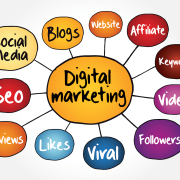Crafting compelling content is crucial for successful digital marketing. Your website’s content will grab your target audience’s attention and keep them engaged. Here are some key strategies to help you craft compelling content:
1. Understand your target audience: Understanding your target audience clearly before creating content is essential. Conduct market research and create buyer personas to identify their needs, interests, and pain points. This will help you tailor your content to resonate with your audience.
2. Tell a story: Storytelling is a powerful tool to engage your audience and create an emotional connection. Use narratives, anecdotes, and real-life examples to make your content relatable and memorable.
3. Use attention-grabbing headlines: The headline is the first thing your audience sees, so it needs to be captivating. Use solid, intriguing headlines that pique curiosity and entice readers to click and read more.
4. Provide value: Your content should aim to educate, inform, or entertain your audience. Offer valuable insights, tips, or advice to help your audience solve problems or achieve their goals. High-quality and informative content positions your brand as an authority in your industry.
5. Use visuals: Visual elements, such as images, videos, infographics, and charts, can significantly enhance the appeal of your content. Visual content is more likely to be shared and remembered by your audience.
6. Optimize for readability: Make your content easy to read and scan using short paragraphs, bullet points, subheadings, and relevant formatting. Use clear and concise language, avoiding jargon or technical terms that may confuse your readers.
7. Incorporate keywords: Don’t forget search engine optimization (SEO) while creating compelling content. Incorporate relevant keywords throughout your content to improve its visibility in search engine results.
8. Encourage engagement: Encourage your audience to engage with your content by asking questions, inviting comments, and promoting social sharing. Respond to comments and engage with your audience to build a community around your brand.
9. Test and analyze: Track the performance of your content using analytics tools to understand what works and what doesn’t. Analyze metrics such as page views, time on page, shares, and conversions to optimize your content strategy.
By applying these strategies, you can create compelling content that captures your audience’s attention, drives engagement, and ultimately helps boost your business in the online world. Remember to continually adapt your content strategy based on feedback and evolving trends to stay ahead of the competition.







